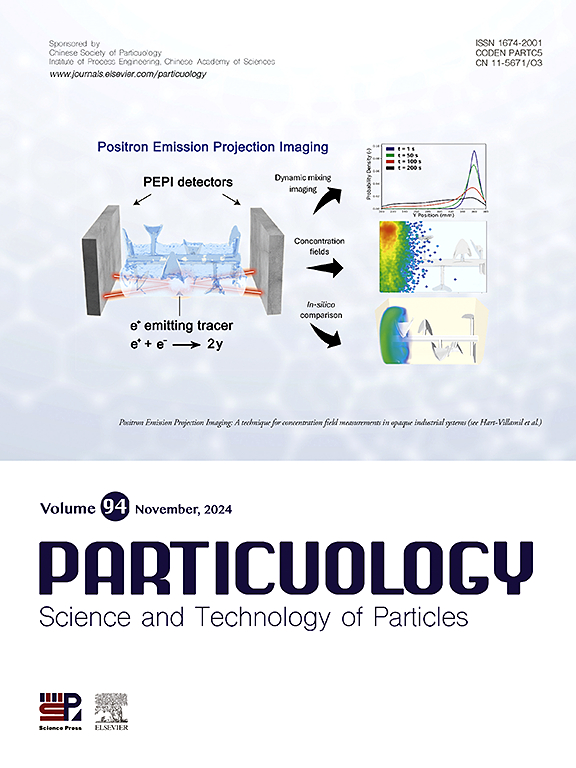Metal valence state-regulated Li bond chemistry for efficient lithium–sulfur battery catalysis: A case study of cupric and cuprous oxides
IF 4.1
2区 材料科学
Q2 ENGINEERING, CHEMICAL
引用次数: 0
Abstract
Valence state is identified as a key property of transition metal-based catalysts in conventional heterogeneous catalysis research. For a specific monometal element, however, the regulatory role of valence state has seldom explored in emerging energy catalytic applications such as rechargeable lithium–sulfur batteries suffering from sluggish sulfur cathode conversion kinetics. In this study, two monometal oxides with distinct valence states, cupric oxide (CuO) and cuprous oxide (Cu2O), were investigated, revealing valence-state-dependent interactions between oxides and sulfur species, as well as the modulated sulfur reduction reaction (SRR) kinetics. In addition to the inherent Cu2+-enabled surface (poly)thiosulfate redox, divalent Cu2+ and monovalent Cu+ were found to steer the oxygen reactivity and so indirectly tune the lithium bond strength that dictates the surface chemisorption of lithium (poly)sulfides. The stronger interactions between CuO and sulfur species promoted SRR conversion kinetics, enabling enhanced lithium–sulfur battery performance under kinetically demanding conditions such as high-rate capability at 2 C with a moderate sulfur loading of 1.3 mg cm−2 and cycling stability for over 110 cycles at a high sulfur loading of 4.8 mg cm−2. This work is expected to expand the scope of metal-valence-state effect on heterogeneous catalysis and offer an unconventional “indirect” way to regulate lithium-bond chemistry for battery research.

高效锂硫电池催化的金属价态调节的锂键化学:铜和亚铜氧化物的案例研究
在传统的多相催化研究中,价态是过渡金属基催化剂的一个重要性质。然而,对于特定的单金属元素,价态的调节作用在新兴的能源催化应用中很少被探索,例如可充电锂硫电池,其硫阴极转化动力学缓慢。在这项研究中,研究了两种具有不同价态的单金属氧化物,氧化铜(CuO)和氧化亚铜(Cu2O),揭示了氧化物与硫物种之间的价态依赖相互作用,以及调节的硫还原反应(SRR)动力学。除了固有的Cu2+使表面(聚)硫代硫酸盐氧化还原外,二价Cu2+和单价Cu+被发现可以引导氧反应性,从而间接调节锂键的强度,从而决定锂(聚)硫化物的表面化学吸附。CuO和硫之间更强的相互作用促进了SRR转化动力学,从而增强了锂硫电池在动力学要求苛刻的条件下的性能,例如在2℃下1.3 mg cm−2的中等硫负荷下的高倍率性能和在4.8 mg cm−2的高硫负荷下超过110次循环的稳定性。这项工作有望扩大金属价态对多相催化的影响范围,并为电池研究提供一种非常规的“间接”方法来调节锂键化学。
本文章由计算机程序翻译,如有差异,请以英文原文为准。
求助全文
约1分钟内获得全文
求助全文
来源期刊

Particuology
工程技术-材料科学:综合
CiteScore
6.70
自引率
2.90%
发文量
1730
审稿时长
32 days
期刊介绍:
The word ‘particuology’ was coined to parallel the discipline for the science and technology of particles.
Particuology is an interdisciplinary journal that publishes frontier research articles and critical reviews on the discovery, formulation and engineering of particulate materials, processes and systems. It especially welcomes contributions utilising advanced theoretical, modelling and measurement methods to enable the discovery and creation of new particulate materials, and the manufacturing of functional particulate-based products, such as sensors.
Papers are handled by Thematic Editors who oversee contributions from specific subject fields. These fields are classified into: Particle Synthesis and Modification; Particle Characterization and Measurement; Granular Systems and Bulk Solids Technology; Fluidization and Particle-Fluid Systems; Aerosols; and Applications of Particle Technology.
Key topics concerning the creation and processing of particulates include:
-Modelling and simulation of particle formation, collective behaviour of particles and systems for particle production over a broad spectrum of length scales
-Mining of experimental data for particle synthesis and surface properties to facilitate the creation of new materials and processes
-Particle design and preparation including controlled response and sensing functionalities in formation, delivery systems and biological systems, etc.
-Experimental and computational methods for visualization and analysis of particulate system.
These topics are broadly relevant to the production of materials, pharmaceuticals and food, and to the conversion of energy resources to fuels and protection of the environment.
 求助内容:
求助内容: 应助结果提醒方式:
应助结果提醒方式:


